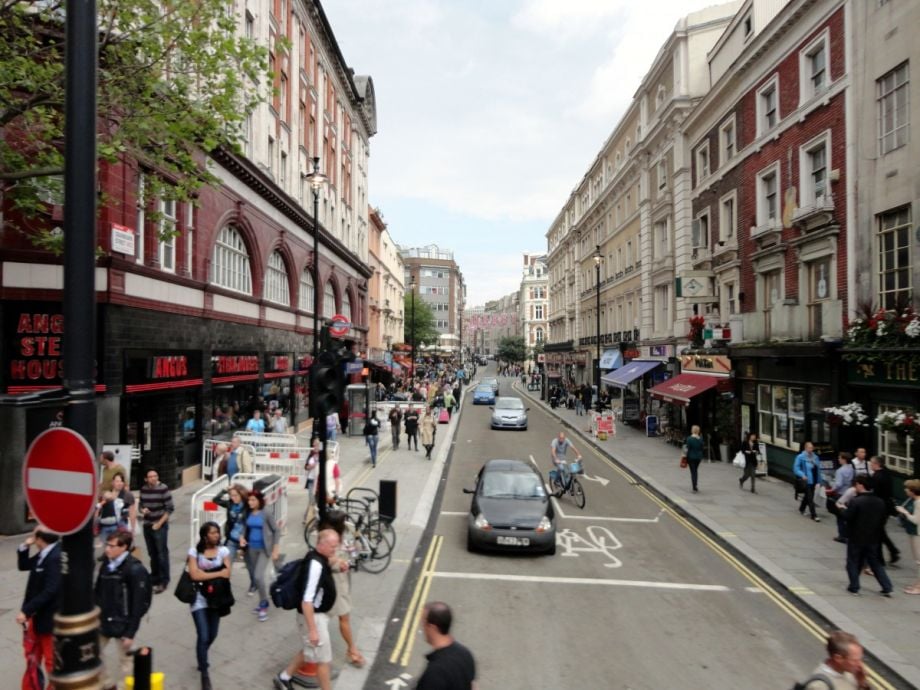The Island Press Urban Resilience Project, supported by the Kresge Foundation, is working to promote a holistic understanding of resilience that is grounded in equity and sustainability.
This post, by Ben Plowden, was originally published at NextCity.org

For urban transport planners like me, these are interesting times. As our cities expand to accommodate new residents, traffic steadily worsens, along with attendant problems of congestion, pollution and accidents. Our challenge is to keep traffic moving without sweeping away the neighborhoods and amenities that draw people to cities in the first place.
Most people assume that city street planning is a technical issue, involving prosaic concerns like road widths, demand modeling, traffic signal control and highway capacity. In fact, street planning is what social scientists call a “wicked” problem: an issue involving many stakeholders with competing interests; no single right answer; competing versions of value; and zero-sum outcomes. If one user group “wins” — for example, by securing a new pedestrian crossing outside a local school — another group may “lose,” as nearby stores contend with slower delivery times.
To solve this conundrum, we must understand city streets — and how they generate value for urban communities and the wider society.
At their most basic, streets are a set of physical assets: pavement, traffic signals, bridges, railings, benches, streetlights and all the complex technology that makes them work. The value of a city’s streets is often defined by the cost of replacing these assets. But their actual value far exceeds their asset value. Streets are valuable because of the services that they provide for the economy and society. Those services fall into two main categories: moving and living.
A city’s streets are arteries or channels for the flow of people and goods — in cars, buses and taxis, on foot or by bicycle, in vans and trucks. This moving function is vital, and it has dominated post-war urban street planning. But in many cities, the dominance of the moving function has resulted in what Danish architect Jan Gehl calls the “60kph environment” — elevated freeways, highways bisecting communities, looming road signs designed to be read at speed.
Too often, this infrastructure has crowded out the other crucial function of urban streets: living.
Successful cities are where people stop, says Gehl, not where they keep moving. City streets are also public spaces in which civic life is played out. They are where people live and shop, where they sit in sidewalk cafes and watch passersby, the site of public gatherings and chance encounters. In London, where I serve as the director of surface transport, roads and streets account for about 80 percent of public spaces — way more than the city’s parks, gardens and riverside walks.
As cities seek to attract new businesses, they are also recognizing that global professionals think of safe, accessible and attractive streets as must-haves. At the same time, cities need to acknowledge the equity issues surrounding infrastructure. Freeways, intersections and depots are typically relegated to lower-income communities. So, while the affluent enjoy sidewalk cafes, low-income city-dwellers must cope with pollution, noise and diminished quality of life.
There is a growing recognition that the social and economic health of a city depends on streets that allow moving and living, efficiently and equitably, for all citizens. In London, we are working to make that vision a reality.
The challenges are steep. Traffic is set to grow in coming decades as our economy and population continue to expand. Congestion — particularly in the central area — could rise significantly as a result. And there is growing competition among different users: Cycling advocates will celebrate protected bike lanes, while bus companies express concern over changing traffic patterns.
To help meet these challenges, in 2012, Mayor Boris Johnson and Transport for London (TfL) set up a Roads Task Force that brought together all the key street user interests. Their challenge was to see if they could agree on some principles for how the street network should be funded, designed, managed and operated.
The Task Force was a success. Its report in July 2013 set out the challenges facing London’s streets over the next few decades. It made clear that the Mayor and TfL would need to use all the tools in the planning and operational toolbox to meet these challenges, including possible development of new ways of charging for road use. And it endorsed the notion that the value of London’s streets lies in both their moving and living functions.
This last conclusion is very significant. It gives rise to a way of classifying the city’s streets according to whether they are important for their moving role, their living role — or both. This classification will underpin highway and public realm design standards; decisions about what speed limit should apply to particular roads; and what priority should be given to cars, buses, taxis, walking, cycling and sitting around drinking coffee.
Crucially, it moves the debate on street planning in London away from the idea that there should be a single “user hierarchy” across the network. There is no “one size fits all” solution to competing priorities on a city’s streets. Some streets are primarily about moving goods and people. Others are mainly places for human interaction and discourse. And many require designing and managing to fulfil both roles. TfL is now working with the local councils in London to classify every street in London according to its relative importance on the “living” and “moving” scales. We have classified nearly 10,000 miles so far, from a total of 11,500 miles. This marks a new way of planning a city’s streets.
The Roads Task Force hasn’t managed to take all the politics out of the management of London’s streets — far from it. City street management remains an inherently political issue. But it has provided everyone involved a common way to think about who and what should take priority on the city’s crowded streets.
Ben Plowden is the director of strategy and planning, surface transport for Transport for London.


